Ceilings have long been the canvas for artists, architects, and craftsmen throughout history. From grandiose cathedrals to modern architectural marvels, ceilings are often the unseen jewel of a structure.
This blog explores ten of the world’s most beautiful ceilings, each telling its own story through intricate designs, vibrant colors, and breathtaking artistry. Join us on this visual journey as we uncover the masterpieces that lie above.
1. Sistine Chapel, Vatican City
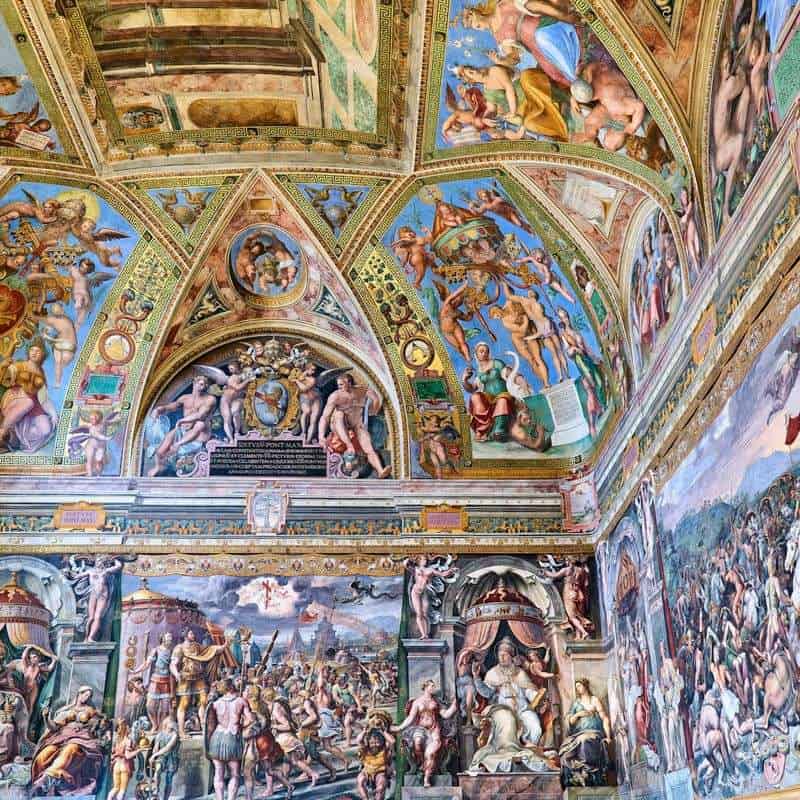
The Sistine Chapel ceiling in Vatican City is a masterpiece painted by Michelangelo between 1508 and 1512. This iconic ceiling features intricate frescoes that depict scenes from the Book of Genesis.
The most famous section, the Creation of Adam, captures the moment when God breathes life into Adam. Michelangelo’s use of vibrant colors and detailed human figures is a testament to his genius.
Visitors often find themselves lost in the complexity of the imagery, which requires multiple visits to fully appreciate. Standing beneath this marvel is truly an awe-inspiring experience.
2. Alhambra Palace, Spain

The Alhambra Palace in Granada, Spain, is renowned for its stunning Islamic architecture and its ceilings are no exception.
The Hall of the Ambassadors’ ceiling is adorned with intricate stucco work and geometric patterns. These designs reflect the Islamic art principles of symmetry and repetition.
The craftsmanship is so detailed that it appears almost lace-like, and the play of light and shadow adds to its mystique. Exploring these ceilings offers a glimpse into the rich history and culture of Moorish Spain. Each visit reveals new details previously unnoticed.
3. Château de Versailles, France
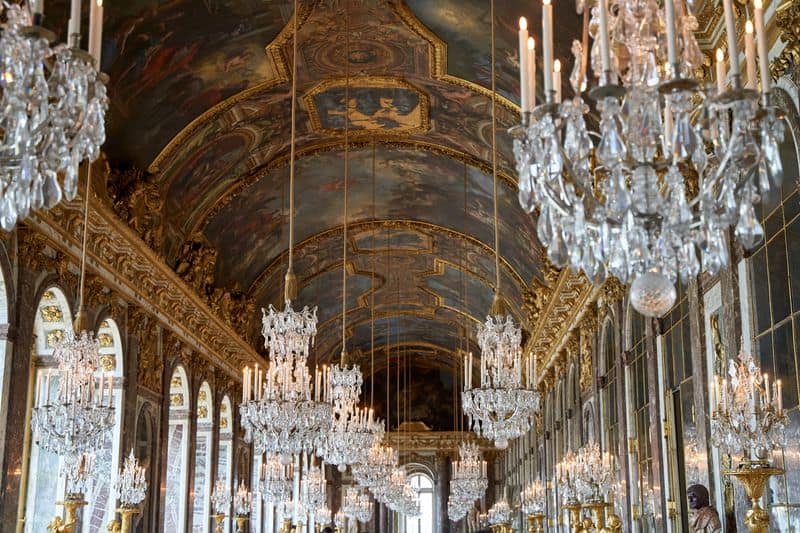
The Hall of Mirrors in Château de Versailles is a symbol of opulence and grandeur. The ceiling, painted by Charles Le Brun, is adorned with Baroque frescoes depicting the achievements of Louis XIV.
These paintings are surrounded by ornate gilded moldings that capture the light from the hall’s numerous chandeliers. The reflections in the mirrors amplify the beauty of the ceiling, creating a dazzling effect.
Visitors often marvel at the artistic skill and extravagance that went into creating this masterpiece. It’s a breathtaking testament to the glory of the French monarchy.
4. St. Peter’s Basilica, Vatican City
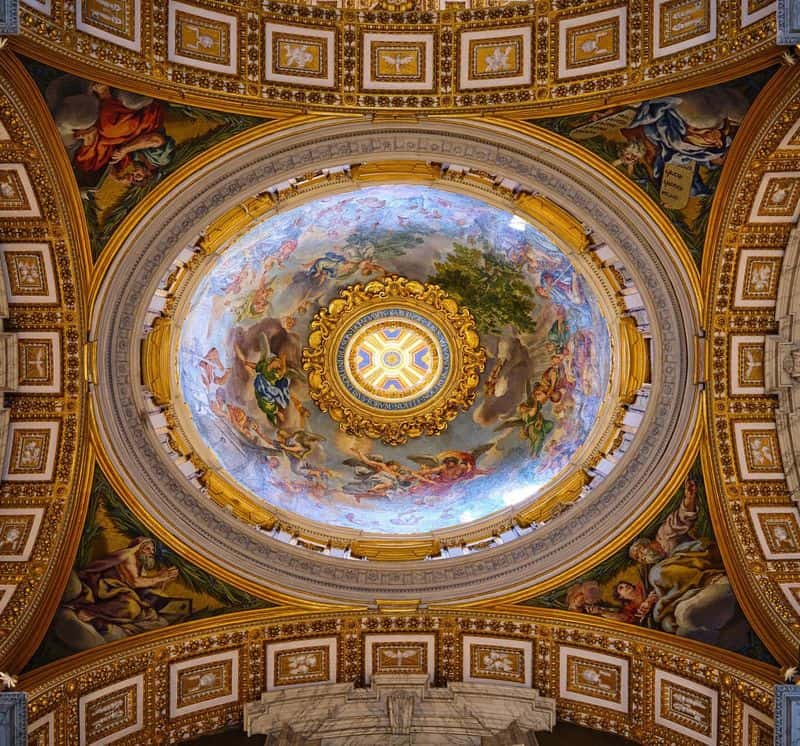
St. Peter’s Basilica in Vatican City boasts a magnificent dome designed by Michelangelo. This Renaissance masterpiece is adorned with intricate mosaics and religious iconography that captivate the eye.
The dome’s design ingeniously allows light to filter through, creating an ethereal atmosphere within the basilica. Visitors often find themselves gazing upwards, mesmerized by the artistry and spiritual symbolism.
The dome stands as a testament to the architectural and artistic prowess of the Renaissance period. Its presence is both imposing and inspiring, drawing countless pilgrims and tourists alike.
5. Sheikh Zayed Grand Mosque, UAE
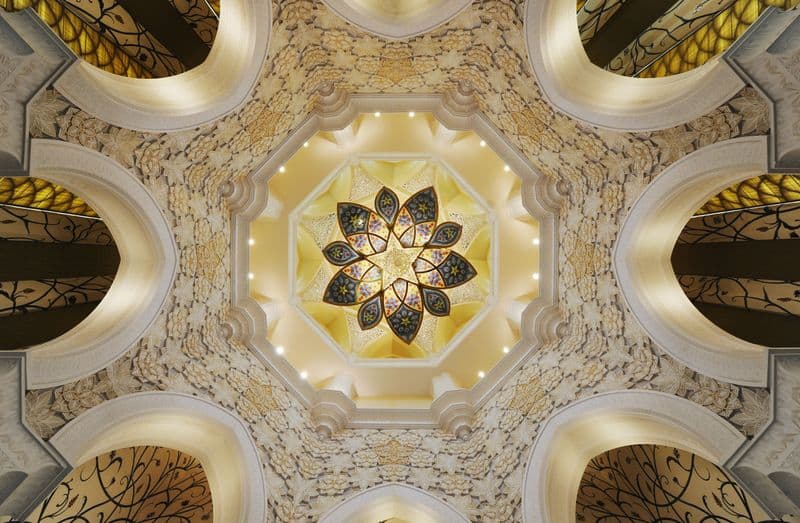
The Sheikh Zayed Grand Mosque in Abu Dhabi is a marvel of modern Islamic architecture. Its ceiling is a blend of intricate floral patterns, calligraphic inscriptions, and grand chandeliers that illuminate the space with a warm glow.
The use of white marble and gold accents creates a heavenly appearance. Visitors are often struck by the mosque’s serene beauty and the meticulous detail in its design.
The ceiling, much like the mosque itself, embodies a sense of peace and unity. It’s a place where art and spirituality converge.
6. Palau de la Música Catalana, Spain
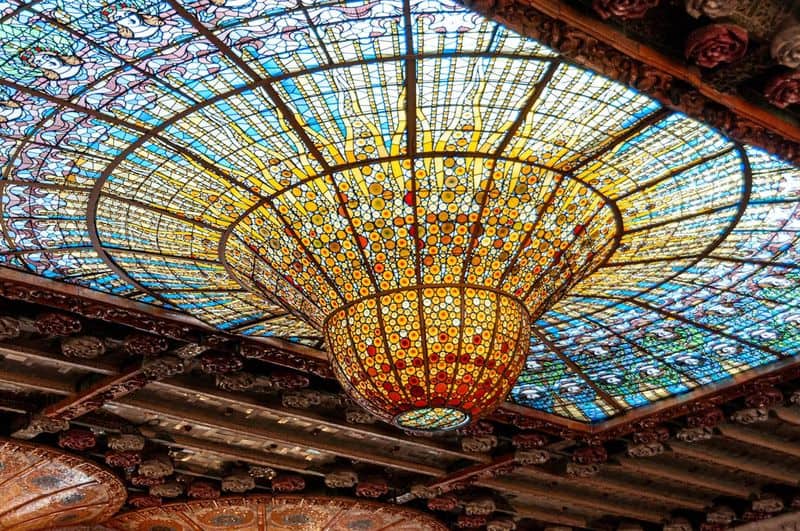
The Palau de la Música Catalana in Barcelona is a gem of Catalan modernism. Its ceiling is dominated by a stunning stained glass skylight that bathes the concert hall in natural light.
The vibrant colors and intricate patterns create a kaleidoscope effect, enhancing the acoustics and ambiance. Designed by Lluis Domènech i Montaner, this ceiling is a testament to the fusion of art and architecture.
Visitors find the interplay of light and music enchanting, making each performance a unique experience. It’s a celebration of creativity and innovation.
7. Cappella Palatina, Italy
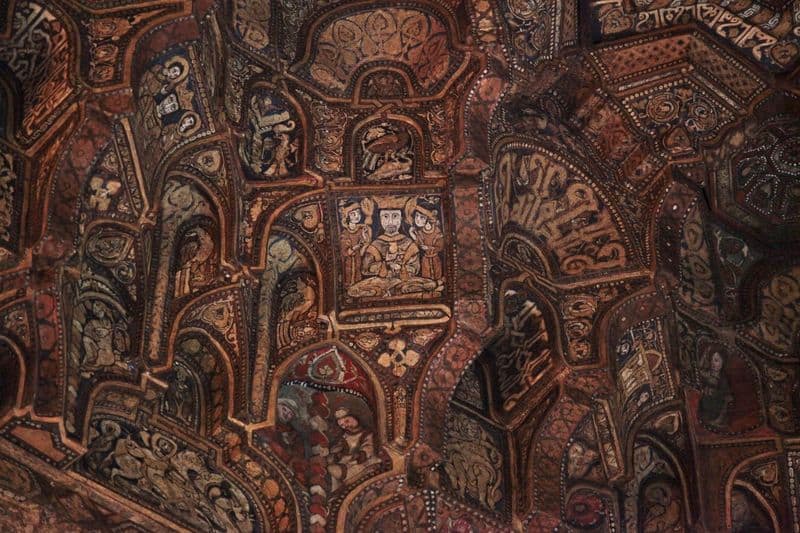
The Cappella Palatina in Palermo, Italy, is renowned for its exquisite mosaics that cover the ceiling. This 12th-century chapel blends Norman and Byzantine artistic traditions, evident in its rich iconography and golden hues.
The ceiling’s mosaics depict biblical scenes and saints, each detail painstakingly crafted. Visitors often feel transported back in time, surrounded by the chapel’s serene beauty and spiritual atmosphere.
It’s a testament to the enduring legacy of Byzantine art. The Cappella Palatina continues to inspire awe and reverence among those who visit.
8. Opera Garnier, France
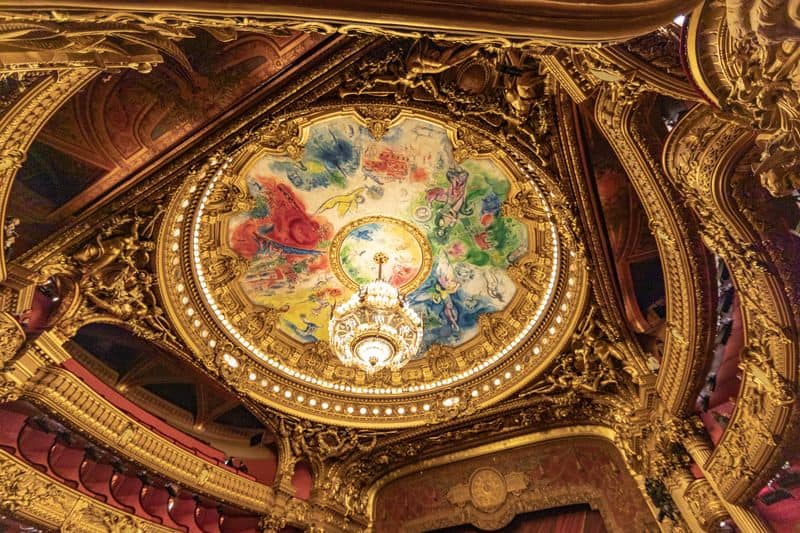
The Opera Garnier in Paris is as much a visual masterpiece as it is an architectural one. Its ceiling, painted by Marc Chagall, is a vibrant fresco depicting scenes from famous operas.
The art is surrounded by a gilded frame, with grand chandeliers adding to the opulence. This modern addition to the historic opera house offers a fresh contrast to its traditional design.
Visitors are often captivated by the harmonious blend of old and new, enhancing the overall experience. It’s a celebration of art and performance.
9. The Ceiling of the Library of Congress, USA
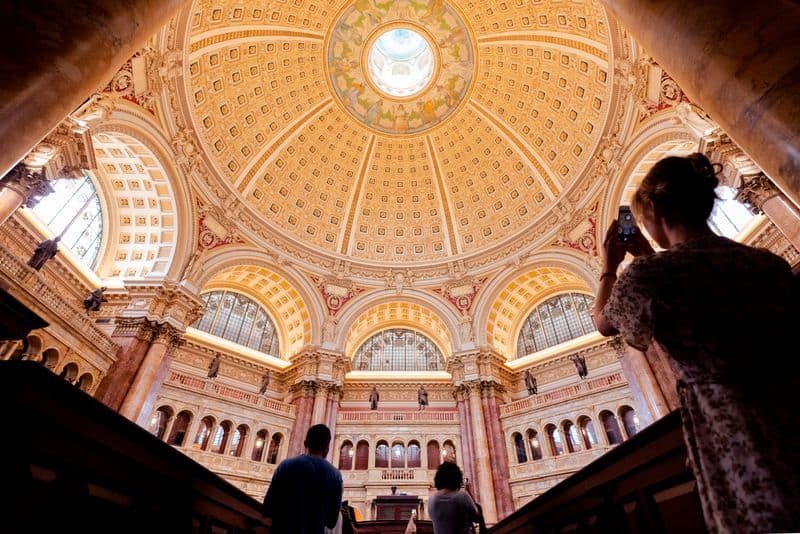
The Library of Congress in Washington, D.C. features an elaborate ceiling that is a tribute to knowledge and learning. Renaissance-style murals adorn the ceiling, depicting allegorical figures representing disciplines such as philosophy and art.
The architectural details are intricate, with gilded moldings and coffered sections enhancing the grandeur. Visitors often admire the ceiling’s beauty while pondering the vast collection of knowledge housed below.
It’s a space where art and intellect meet, inspiring those who enter to explore and learn. The ceiling is truly a masterpiece of design.
10. Dolmabahçe Palace, Turkey
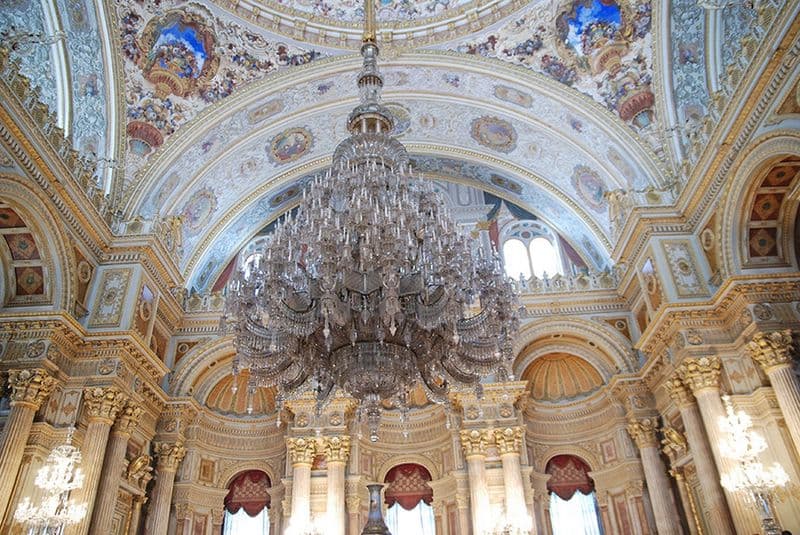
The Dolmabahçe Palace in Istanbul is a stunning example of Ottoman grandeur, with its main hall’s ceiling being a highlight. This ceiling is adorned with European baroque influences, featuring intricate patterns and lavish chandeliers.
The use of gold leaf and pastel hues adds a touch of elegance. Visitors are often impressed by the palace’s blend of eastern and western design elements. The ceiling’s grandiosity is a reflection of the empire’s historical opulence. It’s a place where history and beauty converge, offering a glimpse into a bygone era.

